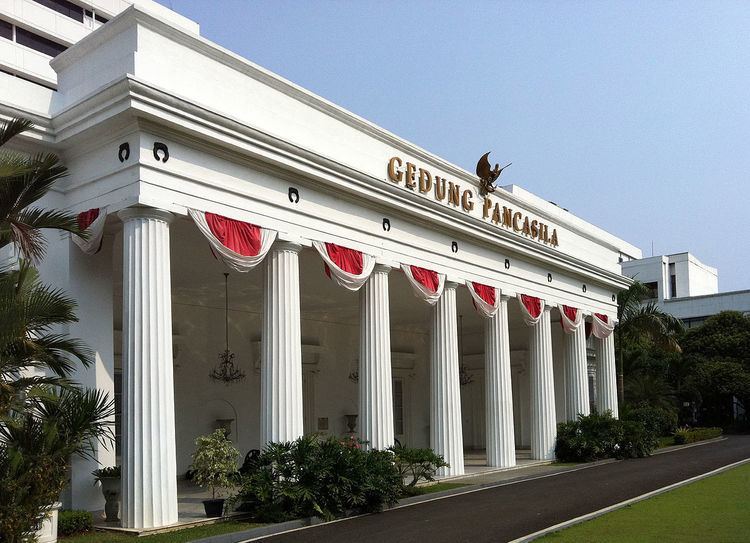Status used as museum Phone +62 21 3441508 Architectural style Indies Empire style | Type Government building Construction started early 1830s Province Jakarta | |
 | ||
Former names Residence of Hertog Bernhard; Volksraadgebouw Address Jl. Pejambon No. 6, Senen, RT.9/RW.5, Senen, Kota Jakarta Pusat, DKI Jakarta 10410, Indonesia Hours Open today · 8AM–6PMWednesday8AM–6PMThursday8AM–6PMFriday8AM–6PMSaturdayClosedSundayClosedMonday8AM–6PMTuesday8AM–6PMSuggest an edit Similar Sacred Pancasila Monument, Indonesian Stamp Museum, Museum Fauna Indonesia, Purna Bhakti Pertiwi M, Basoeki Abdullah Museum | ||
Lady diana death sound live in pundi amal at pancasila building official video music hq
Pancasila Building (Indonesian Gedung Pancasila) is a historic building located in Jakarta, Indonesia. The name Pancasila refers to the speech delivered by Sukarno in the building on which he explained the concept of Pancasila, a philosophical concept which would be the foundation of the Indonesian Nation, on June 1, 1945. Built in the early 1830s, the building is one of the many 19th-century colonial landmarks in Jakarta. Pancasila Building is currently belongs to the Indonesian Ministry of Foreign Affairs.
Contents
- Lady diana death sound live in pundi amal at pancasila building official video music hq
- History
- Cited works
- References
History
The building was located in the neighborhood Weltevreden, originally a parcel of land acquired by Cornelis Chastelein on 6 March 1697 on the east side of the bovenstad (the Upper Town) in what is now the area to the east of Merdeka Square. The building was built in 1830 as a residence for Hertog Bernhard (1792-1862), a German man who was also a Dutch Royal Army Commander. This lavish building was designed in a Neoclassical Empire Style on the east bank of the Ciliwung. The adjacent park and street Hertogspark (also called Jalan Pejambon) was named after him.
In 1918, the building housed the Volksraad of the Dutch East Indies, the first national level council which include a native Indonesian representation. It received the name Volksraadgebouw or Building of the Volksraad).
With the dissolution of the Volksraad during the Japanese occupation in 1942, the building was re-purposed for the Preparatory Committee for Indonesian Independence (Indonesian Badan Penyelidik Usaha-usaha Persiapan Kemerdekaan Indonesia or Japanese Dokuritsu Zyunbi Tyoosakai).
After the independence period, in early 1950, the building was transferred to the State Department, and then to the Ministry of Foreign Affair. It was renamed into Gedung Pancasila or Pancasila Building on June 1, 1964. During the 1960s, the building was used to educate prospective diplomats. Today, the building was mainly used for important ceremonies of the Ministry of Foreign Affairs.
Pancasila Building is also the place where the draft of the Jakarta Charter (Indonesian Piagram Jakarta) and the Constitution of Indonesia before the proclamation of independence.
